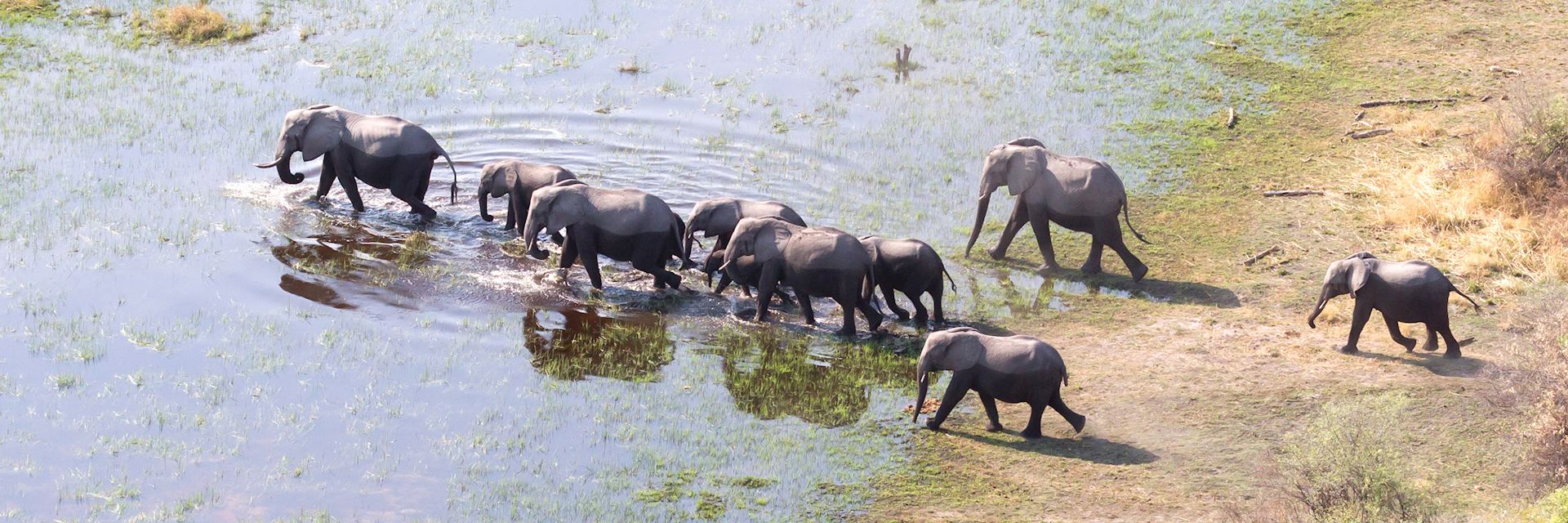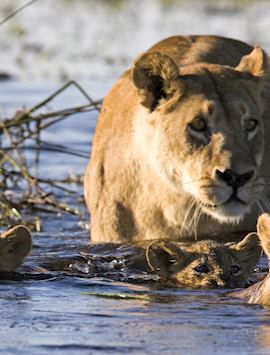By Audley Botswana specialist Harriet
As you explore Botswana’s mix of wet and dry landscapes, you might come across big cats lying at the feet of trees. Lines of elephant march past, speeding up excitedly as they approach water. Skittish impala jump and run like athletes warming up for a race. And, at every glance your eye catches another bird, be it a brown snake eagle perched on the tip of a dead tree, or a lilac-breasted roller flashing its rainbow of feathers. For me, it’s safari at its best. And that’s without mentioning the exceptional level of comfort you’ll find at each camp, the quality of the guiding, and the three-course meals that round off each day.
For me, it’s safari at its best. And that’s without mentioning the exceptional level of comfort you’ll find at each camp, the quality of the guiding, and the three-course meals that round off each day.
Safaris in Botswana: what to expect
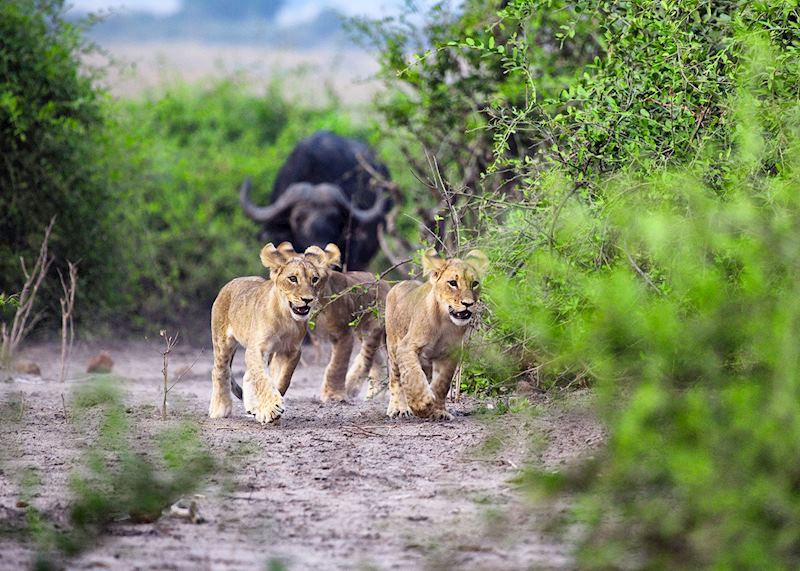
Botswana is one of the most exclusive safari destinations thanks to its government’s focus on quality experiences and conservation rather than mass tourism. Most camps and lodges are kept to around 16 guests or fewer, so you’re unlikely to see many, if any, other vehicles when out in the bush.
I never tire of game drives, but they aren’t your only option. Sunset boat cruises, bush walks and peaceful mokoro (traditional canoe) trips are all on the cards, depending on where you are and the time of year. I recommend mixing and matching wet and dry areas for a more varied trip.
Even if you don’t encounter big cats on a game drive, you’ll return to camp with a new-found knowledge of the many species your guide points out. Almost all guides and staff are native to Botswana, and the guiding qualifications here are some of the most rigorous in Africa. Part of the safari experience is witnessing the tracking skills of your guides and trackers. They’ll show you the differences between the paw prints of a lion and a hyena, for example, so you can also look out for signs of life.
Green season vs dry season

Botswana’s year splits roughly between a summer green season (November to April) and winter dry season (May to October). Which season you travel in can impact what you see and do on your safari. Confusingly, the dry season sees water levels at their highest, thanks in part to the water that flows down from Angola. This makes boat and mokoro trips possible in many areas, giving you a wider choice of activities. Animals are easier to see in the shorter grasses, and bush walks are more widely offered.
The green season has drier ground conditions, but you’re more likely to experience short thundery downpours (though these are welcome relief from the high temperatures). Grasses are long and trees thick with leaves. You can see animals with their young, and it’s the best time for birdwatching, with summer migrants swelling numbers.
Getting around
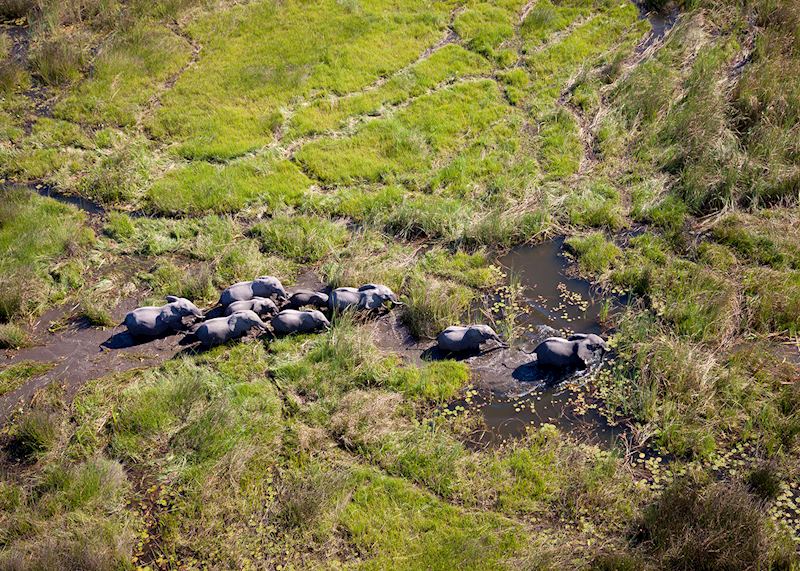
The easiest way to move between areas is by light aircraft. Most camps are within a short game drive of an airstrip. Flights usually last no longer than 40 minutes, though you may stop to pick up other passengers en route. The views often make these transfers an experience in themselves, and you might spot elephant cooling off in waterholes below.
Below, I’ve shared some of the best safari destinations in Botswana. It’s possible to combine several or all of these areas in one trip. Flying into Maun, you might want to explore several concessions in the Okavango Delta before flying northeast to Chobe National Park. From Chobe, it’s easy to catch an onward flight from the town of Kasane, or head to Victoria Falls, which is less than two hours away by road. Alternatively, combine the delta with the Kalahari Desert for a mix of landscapes and experiences.
Okavango Delta
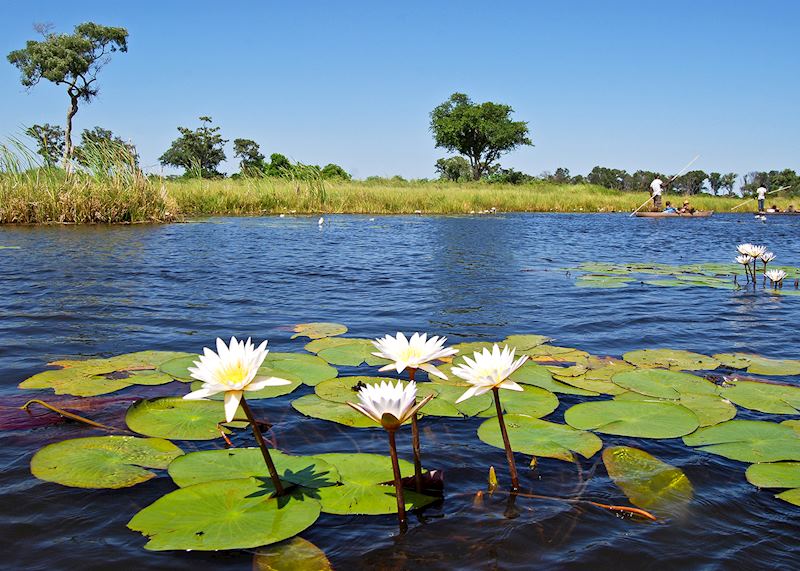
The Okavango soaks through the otherwise arid land, fanning out like a splayed hand. It’s the world’s largest inland delta, and the abundance of water here has a magnetic effect on wildlife, big and small. Even when water levels are lower, you can see grazing herds with their young, watched by big cats lying in the shade of acacia trees. Elephant families traipse in orderly lines between waterholes, lion roars echo at dusk, rainbow-plumed bee-eaters and lilac-breasted rollers cling to reeds lining waterways, which themselves have been carved out by wandering hippo.
Without doubt, the Okavango is what most people come to Botswana for — it’s the epitome of untouched nature at its rawest. The variety of activities here is another huge draw, as are the guides, who, in my eyes, are exceptional. Narrators, trackers, storytellers, naturalists, and refreshments providers all in one, they make every moment of your safari shine.
The delta is grouped into different reserves and concessions, which vary in water levels and the activities on offer. Below are a few that I particularly enjoy visiting.
Moremi Wildlife Reserve, Okavango Delta
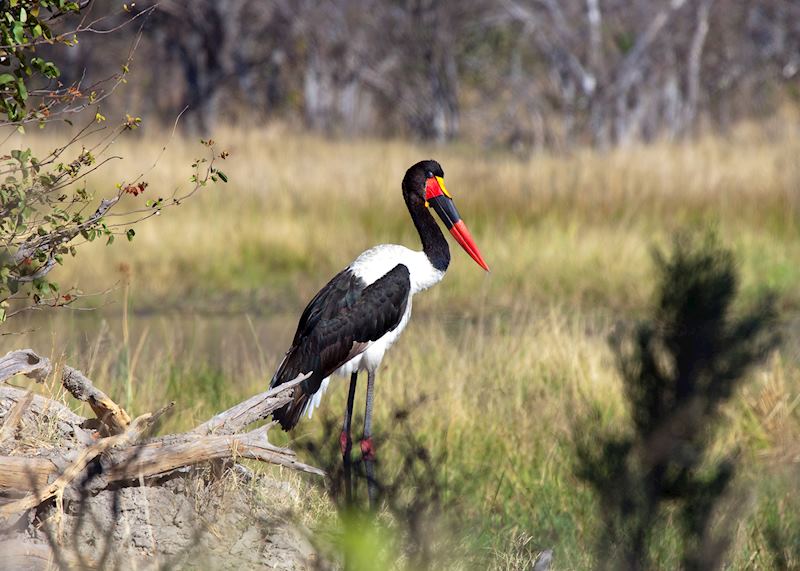
Covering much of the eastern side of the delta, Moremi Wildlife Reserve is one of the drier areas of the delta. Your days here are focused around morning and afternoon game drives, which give you a chance to see antelope, wildebeest, zebra and buffalo grazing on the open savannah. That said, motorboat trips may also be possible, depending on water levels. Pockets of woodland shelter leopard and wild dog, though they can be difficult to spot as this isn’t a private reserve where vehicles can go off-road.
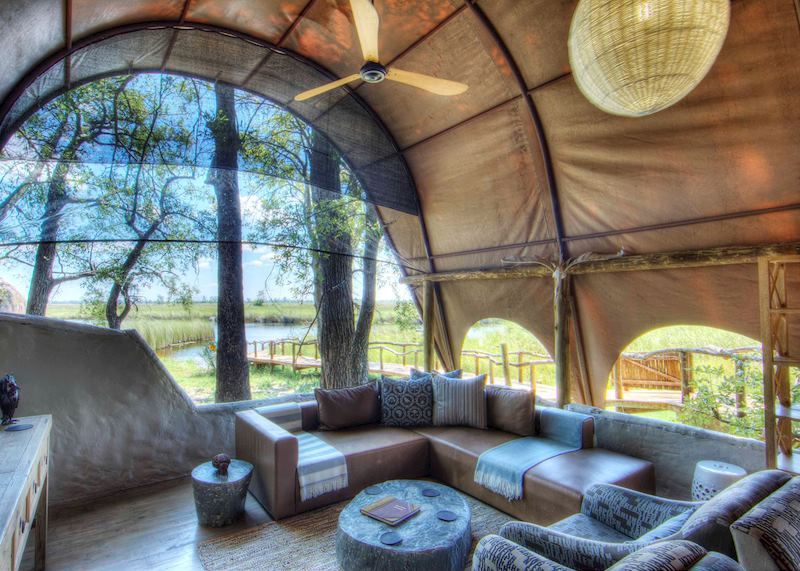
When staying in Moremi, I like Camp Okuti, a stylish property with five rooms based on traditional mosasa reed houses. They have both indoor and outdoor showers and private teak decks facing the Maunachira River. Two-bedroom family mosasas accommodate families with children aged seven and over.
Kwara Concession, Okavango Delta
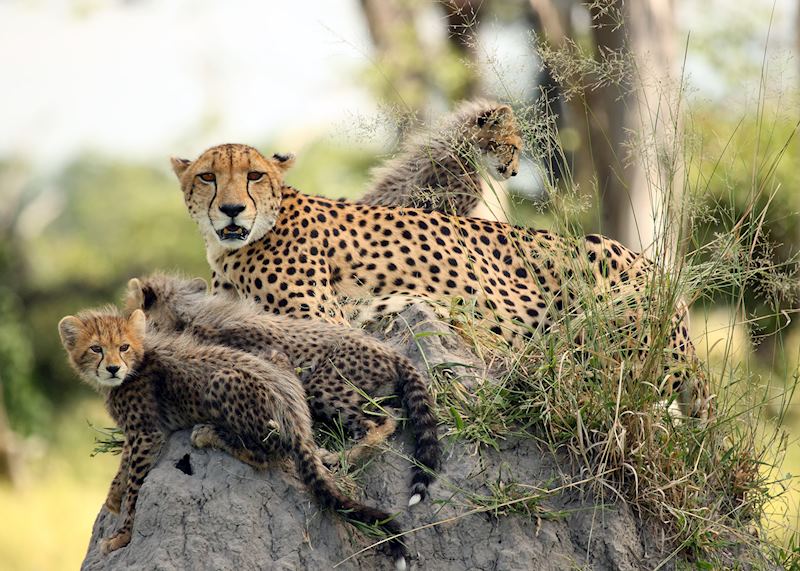
Bordering Moremi, the private Kwara Concession has a good mix of dry and wet areas, so you’ll always have a different way to explore. It’s latticed with lily-scattered lagoons and glistening channels, which you can explore by motorboat or mokoro as the early morning mist rises from the water. Look out for jewel-like malachite kingfishers and fluffy huddles of bee-eaters clinging to the reeds.
The concession’s also excellent for spotting big game on day and night drives, whether it’s a pride of lion grooming each other in the shade, a pair of cheetah on the lookout for their next meal, or a family group of elephant cooling off along the banks. At dusk, you might witness a pack of wild dog begin their evening hunt as zebra keep watch for any lurking danger.
Guides can also lead you out on foot into the drier areas for a chance to zoom in on the more subtle aspects of the ecosystem, from plant life to dung beetles.

I recommend unpacking at Kwara Camp, which sits on the edge of a lagoon that’s often visited by animals big and small. The nine luxurious tents each have a private deck facing the water, an en suite bathroom with both an indoor and outdoor shower, and a bathtub overlooking the game-dotted floodplain. There are also two pools where you can relax between activities.
Okavango Panhandle, Okavango Delta
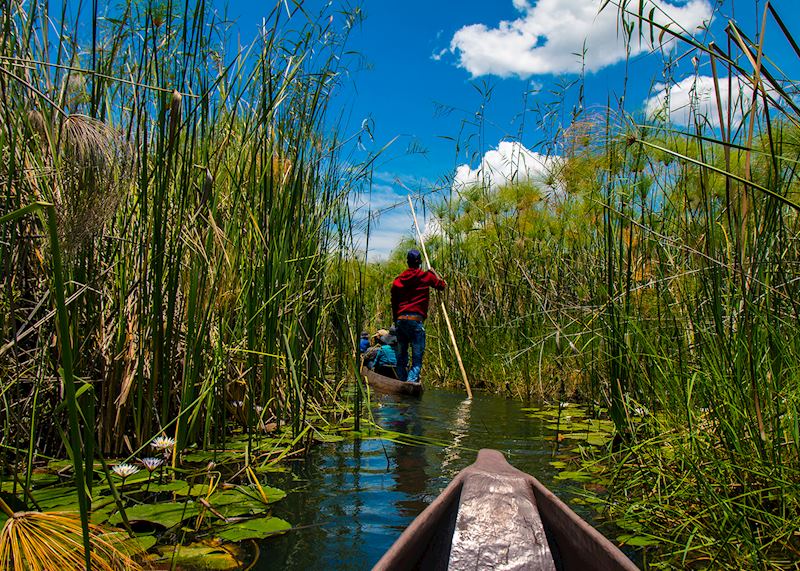
In the far northwest of Botswana, the Okavango River flows from the north for quite a distance before splitting into the delta. Known as the Panhandle, it’s an area where you’re unlikely to see big game, but reed beds and papyrus-fringed lagoons attract a wealth of birdlife. You might spot African fish eagles, wattled cranes, Pel’s fishing owls and western banded snake eagles, to name a few.
Activities here don’t involve vehicles, so you’ll always explore on foot or on the water. Fishing trips give you a chance to catch tigerfish, bream and catfish, but the mokoro trips are the highlight. Sitting in one of these traditional dugout canoes (usually made from the trunk of sausage trees), you drift along the water channels at a leisurely pace, your guide skilfully using a wooden pole to propel you forward.
Dragonflies buzz past at eye level, pied kingfishers hover overhead before shooting down to the water to spear their prey, and African jacanas pick their way over lily pads. Over on the banks, you might see Nile crocodiles basking or red lechwe coming to drink. With no engine noise, you find yourself completely immersed in the sounds of the river, from tinkling reed frogs to the haunting scream of a fish eagle.
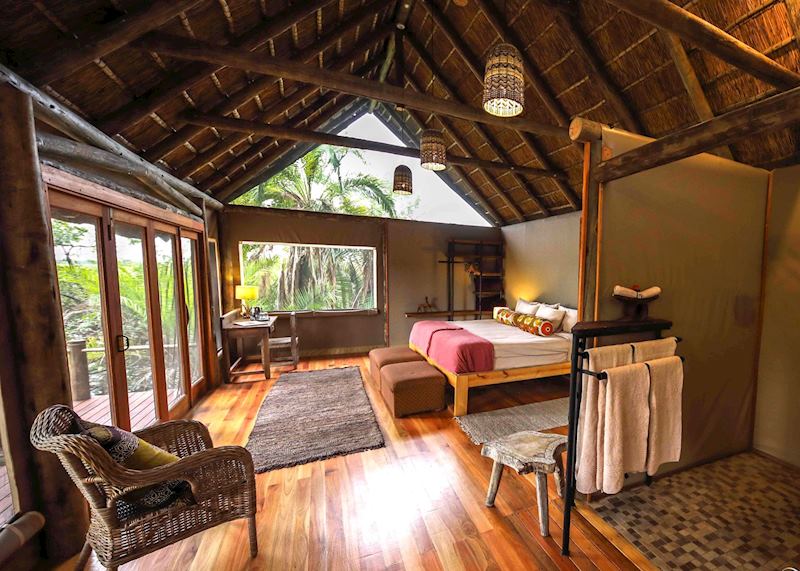
Stay at one of Nxamaseri Island Lodge’s seven chalets, which are set on a secluded island. From here, in addition to fishing and mokoro trips, you can embark on night-time boat trips to see nocturnal birds, and visit the Tsodilo Hills to see ancient rock art.
Chobe National Park
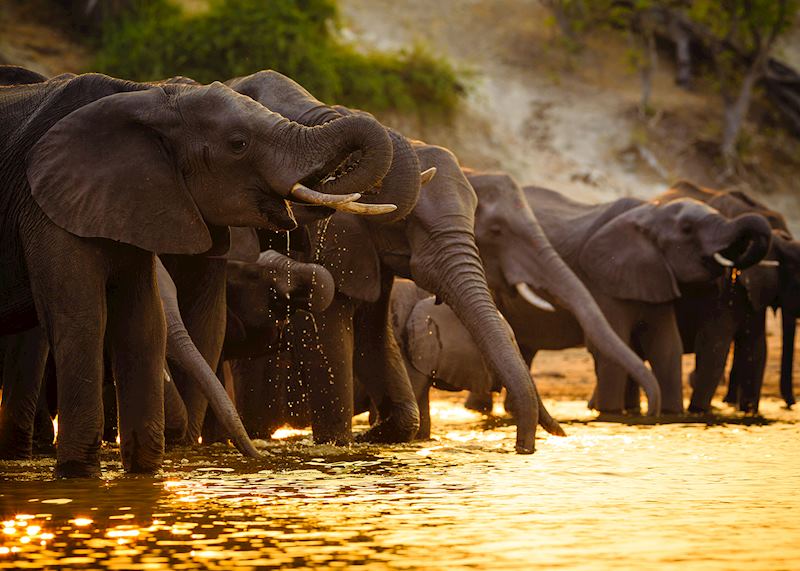
In the north of Botswana, east of the Okavango Delta, Chobe National Park covers a huge expanse of open grassland and the verdant floodplains of the Chobe River. Large numbers of buffalo, impala and kudu graze on the plains, which unsurprisingly attract predators such as lion, cheetah, wild dog and leopard. Game drives are your best chance of seeing the drama unfold.
As soon as you arrive here, you notice there’s one particular animal that seems to be a part of the landscape: elephant. There are thousands of them. Tens of thousands in the dry season, when other water sources have run dry. You can watch from a boat as they line the riverbanks, roll in the thick mud and submerge themselves gleefully in the water. The boat cruises are arguably the main draw of this region. Not only can you get almost within splashing distance of elephant, you’ll also see clusters of partially submerged hippo, just their eyes visible as they watch you from the water’s surface.
Waterbuck stand majestically among the reeds. And birds are everywhere. I saw pied, malachite, pygmy and giant kingfishers flit, hover and dive, African darters drying their wings in the sun, and African fish eagles carefully watching the water from their lofty perches.
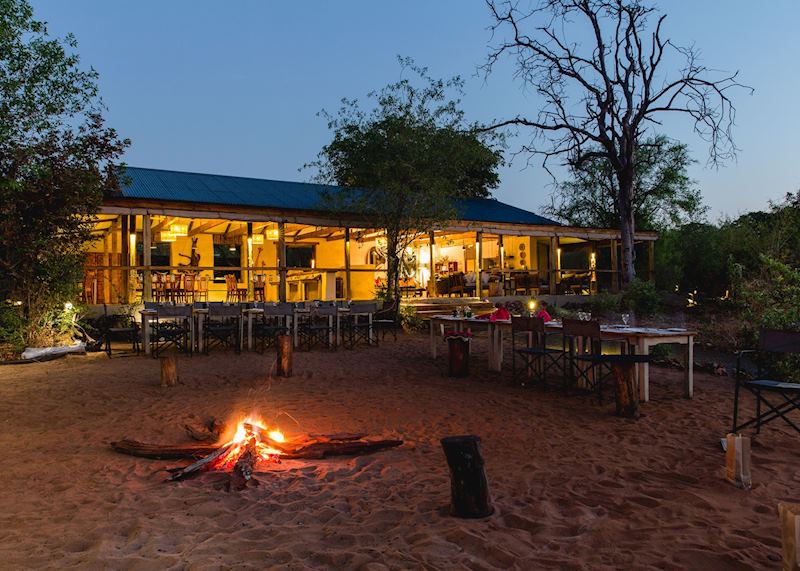
I recommend staying at one of the lodges on the park’s western border. They have a separate jetty, so you can enjoy boat trips away from the busier stretches of water near the city of Kasane. This includes Chobe Elephant Camp, which sits on a ridge overlooking the Chobe River.
Rooms are built from sandbags to keep them cool in the summer, and the airy main area has a pool, lounge, small library and communal dining table. There’s also a two-bedroom family chalet for up to five people.
Linyanti Wetlands, Chobe National Park
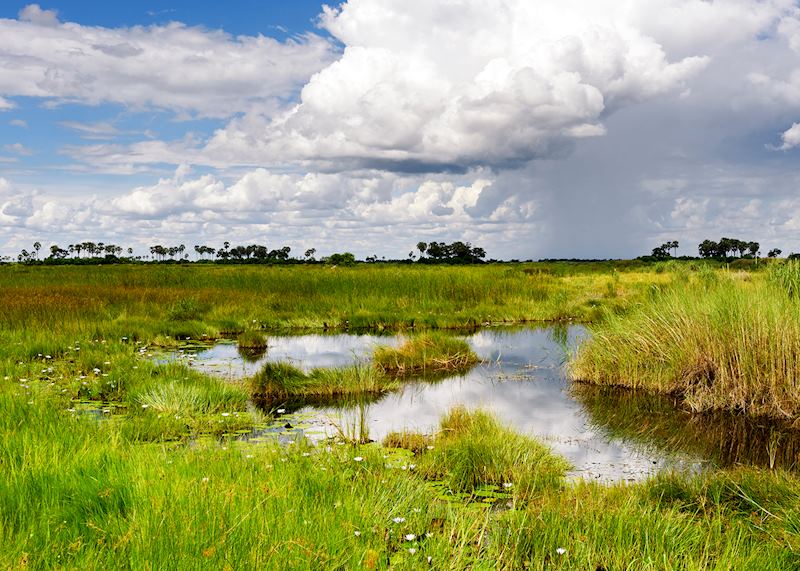
Northeast of the Okavango Delta, within Chobe National Park and close to the Namibian border, the Linyanti Wetlands encompasses swamps, forests and open grasslands stretching along the Linyanti River.
You can take part in a variety of activities here, particularly during the dry season when there’s more water around for mokoros, boating and fishing. Vehicles can go off-road in the private concessions and bush walks are an option for much of the year.
This area immediately felt different to elsewhere in Botswana, as we drove through leafy forests of jackalberry and knobthorn trees. Baboon troops scrambled in the branches and groomed each other in the shade. Families of warthog scuttled past, stopping to watch us and decipher if we were friend or foe. Every few minutes, I’d hear the laughter-like call of a woodland kingfisher echoing through the trees.

Along the river, you have a good chance of seeing waterbuck, red lechwe, zebra and hippo, as well as elephant. And, wherever you are, running into predators is a possibility. Lion, hyena and leopard compete for prey, along with the occasional pack of wild dog.
One evening, we encountered a male lion sitting beneath a tree with his latest prize: the carcass of a young buffalo. He was completely engrossed in his meal, and we could hear the crunching of bones as he devoured every edible morsel. Every so often he’d glance up at us and snarl as a warning: I didn’t need telling twice.
Linyanti Bush Camp and Linyanti Ebony Camp are sister properties in the private Chobe Enclave of Linyanti. Both offer a small number of similarly styled tents, set in front of marshes that flood seasonally. Between April and October, you can enjoy a complimentary helicopter flight from either camp, which gives you a different perspective of the bush.
The Kalahari Desert
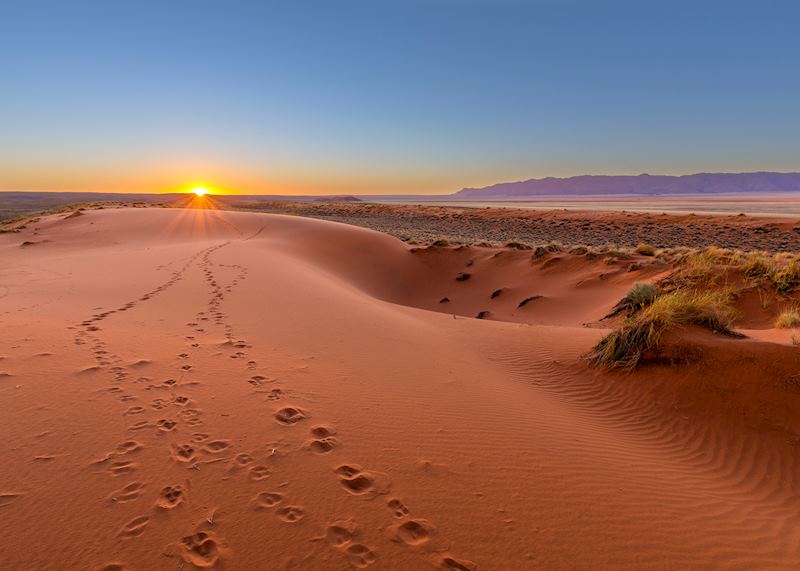
The Kalahari Desert sweeps across most of Botswana, and much of Southern Africa. I find the landscape starkly beautiful, and if you’re coming from the watery reaches of the Okavango Delta, the contrast is drastic.
Here, instead of mopane forest and riverine woodland, the threadbare soil is scattered with thorny scrub and acacias, in certain areas you see dazzling-white salt flats stretching to the horizon, while desert grassland feeds wildlife that’s specially adapted to this environment, like springbok and eland.
It’s worth saying now that the desert isn’t where you go for a big-game safari — here it’s all about enjoying a mix of activities that help you appreciate the landscape and see wildlife species you wouldn’t find in the delta, from bat-eared foxes to meerkats.
You can also spend time with San guides, whose roots in this area go back millennia. They’ll show you techniques they’ve used to survive in this harsh environment, such as making fire, crafting weapons using natural resources, and using the local flora for herbal remedies.
There are several different safari areas within the Kalahari, and which you visit might depend on the activities you want to do, the animals you want to see, and the time of year.
Central Kalahari Game Reserve, Kalahari Desert
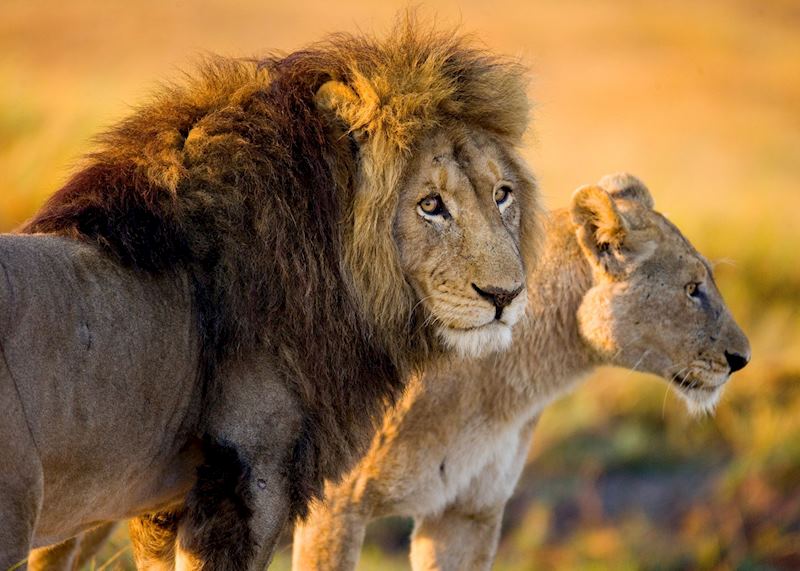
The Central Kalahari Game Reserve is a vast sweep of sandy wilderness punctuated by salt pans. White-backed vultures and bateleur eagles perch on wizened trees, and towers of giraffe kick up dirt as they cross the barren landscape.
It’s best to visit during the green season, when the plains sprout grass under the rains. This sudden food source attracts migratory herds of zebra, springbok and wildebeest. Hot on their tail are lion, leopard, cheetah and jackal hungry for a meal, plus scrounging hyena and the odd pack of wild dog.
I enjoy staying at Dinaka, which lies in its own reserve on the northern edge of the Kalahari. It has seven en suite safari tents, including a two-bedroom family tent. Each tent is connected by a wheelchair-accessible walkway and set on a raised deck overlooking a permanent waterhole.
Activities include morning, afternoon and night drives, as well as guided bush walks where you can look out for kori bustards — the world’s heaviest flying bird.
Makgadikgadi Pans National Park, Kalahari Desert
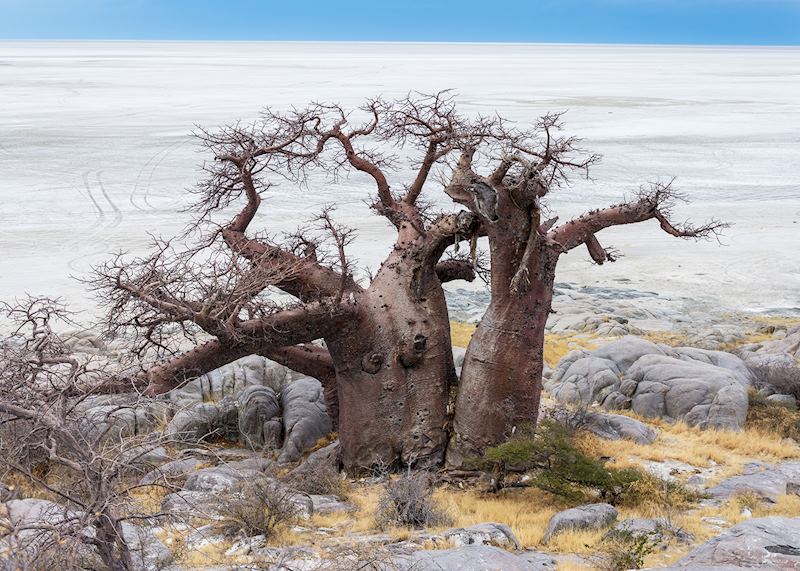
Northeast of the Kalahari, the Makgadikgadi Pans National Park is home to huge, perfectly flat salt pans that shimmer in the heat. These are relics of a vast super lake that covered much of Botswana’s surface millions of years ago. Around the edges of the pans are large tracts of grassland speckled with centuries-old baobabs.
The landscape and wildlife here changes dramatically with the seasons. As you explore the park on game drives during the dry season, playful groups of meerkats frolic across the cracked, sun-baked land. Many are habituated and might come right up to you for a closer inspection. You also have a chance of encountering bat-eared foxes patrolling the pans’ perimeters, and brown hyena scavenging for carcasses.
In the green season, everything changes. The rains typically fall from November onward, turning the landscape green and filling the pans with water. You can see large flocks of flamingos gathering in the shallows. Zebra and wildebeest migrate in their thousands from the Boteti River in the west of the park. And the air fills with the calls of birds and frogs.
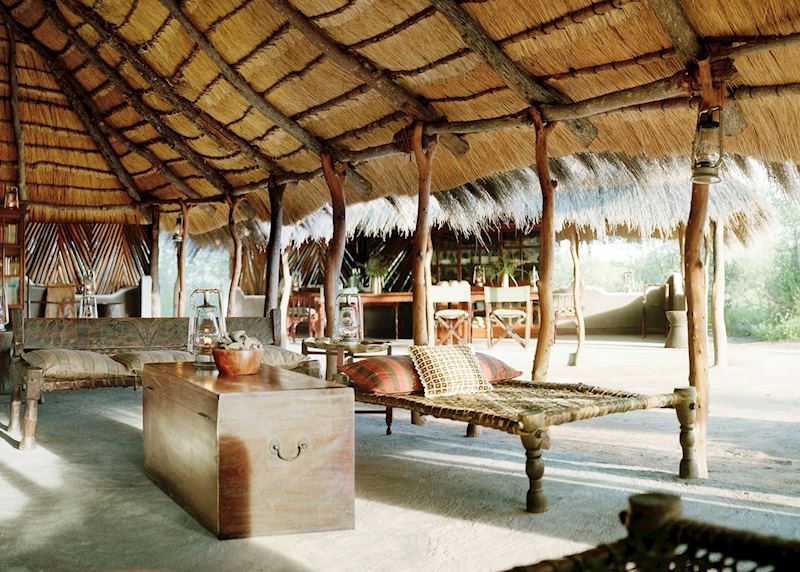
Camp Kalahari offers easy access to the park’s eastern pans. The simple tents are furnished with four-poster beds and Moroccan-style rugs. For families, there are two tents connected by a shared bathroom. Beyond the game drives, you can join a guided walk with a bushman who’ll show you bush techniques, from making fire to crafting weapons.
Trip ideas for a safari in Botswana
Start thinking about your experience. These itineraries are simply suggestions for how you could enjoy some of the same experiences as our specialists. They’re just for inspiration, because your trip will be created around your particular tastes.
View All Tours in Botswana
